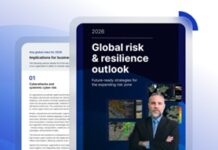
Gigamon has unveiled significant findings on how global Chief Information Security Officers (CISOs) are adapting their cybersecurity strategies for 2026. As leaders in deep observability, their research focuses on managing hybrid cloud infrastructures amidst an AI-driven landscape. The study surveyed over 200 CISOs from Australia, France, Germany, Singapore, the UK, and the US, highlighting a shift in data management, AI application security, and the evolution of SecOps teams.
AI is considered the most transformative technology of our time, influencing business innovation and adversarial tactics alike. The report, titled “CISO Insights: Recalibrating Risk in the Age of AI,” illustrates how AI is accelerating digital transformation and amplifying cyber threats, making data visibility and quality crucial for defending hybrid cloud infrastructures.
With increasing traffic volumes complicating matters, achieving deeper insights has become essential. Notably, 86% of CISOs emphasise the importance of pairing packet-level data with metadata to enhance security posture. This combination provides comprehensive visibility, with metadata being a scalable means to highlight vital signals in large data flows.
Real-time threat monitoring and comprehensive visibility of data in motion emerge as top priorities for optimising defence-in-depth strategies among CISOs. However, 97% admit to facing compromises in visibility gaps, tool integration, and data quality, which impacts the security and management of hybrid cloud environments.
Chaim Mazal, chief AI and security officer at Gigamon, remarked on the dual nature of AI: both a formidable challenge and an exciting opportunity. “The rise in AI-driven ransomware, social engineering, and unchecked shadow AI is pressing security trailblazers to defend actively,” Mazal stated. Nonetheless, AI also enhances security teams, restoring visibility and reshaping organisational defences for fortified security.
The survey highlights how AI has nearly doubled data volumes, expanding the threat landscape and influencing data management across virtual, cloud, and container environments. Consequently, 75% of CISOs perceive public cloud as a significant security risk, prompting many to reconsider their data storage strategies. Furthermore, 73% are contemplating moving public cloud data back to private clouds due to security concerns, marking a shift from the previous trend towards public cloud usage.
Many CISOs face challenges with increased network data from AI, with one in five expressing concern about their current tools. To tackle this, 52% plan to leverage network and application metadata to enhance existing tools’ effectiveness. Additionally, 46% aim for visibility across all data-in-motion, and one in three are setting up protocols around large language models (LLMs) to mitigate emerging risks.
With a 17% year-over-year rise in data breaches, CISOs are under pressure, with 45% being held accountable for breaches. The stress and burnout levels among security teams are rising. To combat this, 45% of CISOs are using AI tools to boost their teams’ capabilities, while 73% consider AI a solution for the global shortage of skilled professionals and limited budgets. By enabling junior analysts with AI, teams can function at expert levels, reducing training costs and improving threat visibility.
The report reveals that 82% of CISOs view deep observability, combining network-derived telemetry and log data across hybrid cloud environments, as crucial for secure and efficient AI deployments. It bridges visibility gaps, enhances threat detection, and ensures AI tools operate with trusted data.











